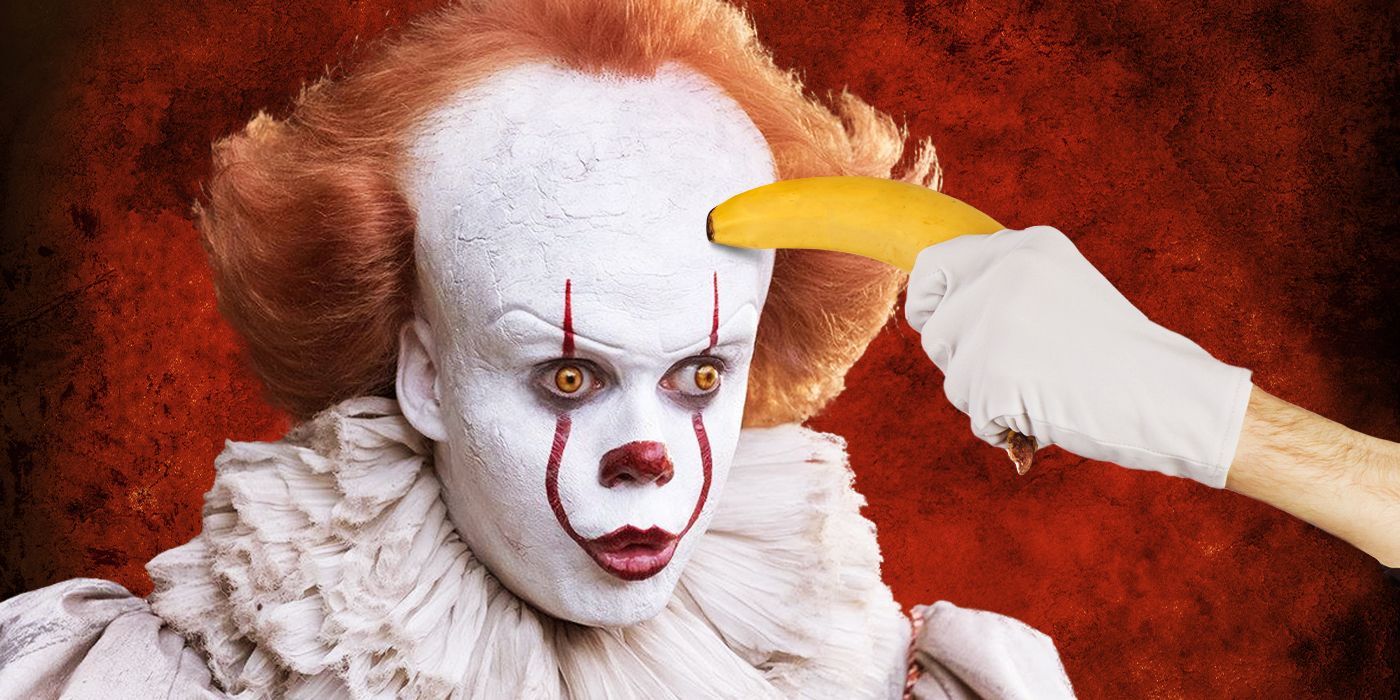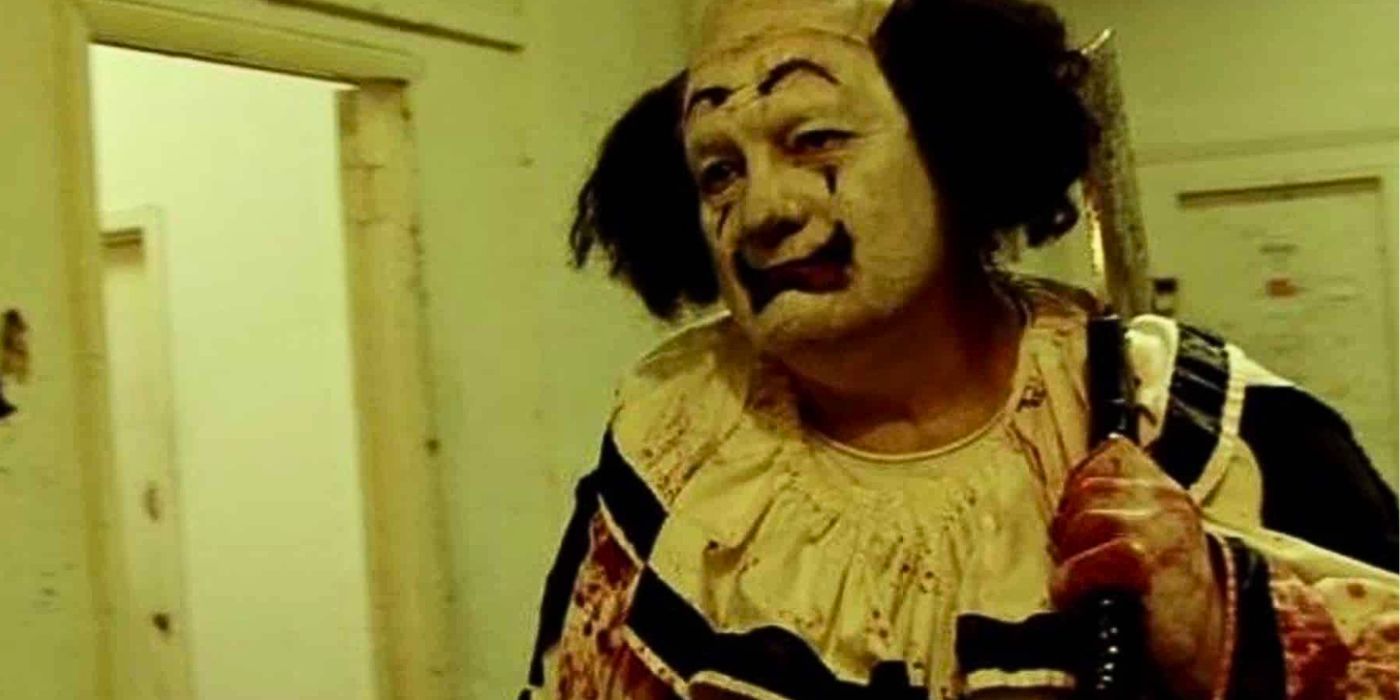
What Is ‘100 Tears’ About?
The film follows two investigative film producers who have become fascinated with the case of the “Teardrop Killer” in their small town, who has been active for decades. Mark (Joe Davison) and Jennifer (Georgia Chris) may constantly be arguing, but using their individual skills, they eventually uncover the dark history of the killer, one that is rooted in the local underground carnival scene. They also theorize that the local girl who went missing, Christine (Raine Brown), may be the killer’s newest victim, and have hopes of finding her alive. Meanwhile, there is a concurrent storyline where we witness the killer in question, Gurdy the clown, mercilessly slicing through the town with an impossibly sized meat cleaver, never slowing his grind, even when he is faced with a jaw-dropping plot twist that we could have never imagined. The parallel arcs operate alongside each other, until they converge in a chaotic and bloody final act, keeping us on our toes to the very last breath.
‘100 Tears’ Features a Clown More Pitiless Than ‘Terrifier’s Art
Immediately, the thing that strikes us is the mind-boggling body count that gains momentum for the very first scene that involves Gurdy. Barely 15 minutes in and 100 Tears has already featured more than ten overly gory death scenes, treating side characters like a sack of intestines and blood, which is what they are reduced to by the time Gurdy is done with them. The only respite from this kill-fest we get is when the film cuts back to the reporters, easing us back into proper narrative beats before pure mayhem begins again. As a low-budget indie film, the excessive practical effects aren’t particularly realistic, but they achieve the effect director Marcus Koch and writer Davison were likely going for — Gurdy is not messing around.
This is the most notable trait that sets him apart from the more mainstream horror clowns. Pennywise and Art also revel in the psychological element of their kills, playing with their victims and torturing them with dread-laden anticipation before striking. They are still pitiless in the sense that they do not have any empathy for who they target, but Gurdy is a different brand of pitiless. He has no interest in foreplay; he cleaves through flesh and bone first, then doesn’t bother to stick around to ask questions later. Even the disingenuous smile we associate with evil clowns isn’t worth the effort to the ever-frowning Gurdy — he just wants to kill. As such, the excessive quality of the bright-red blood and spaghetti guts simply feels like another reflection of the gaudy, headlong rush of a clown.
Gurney the Clown Reminds Us of ‘House of 1000 Corpses’
What makes Gurdy even more compelling in 100 Tears is his backstory, as we find out he actually originated as a clown in a traveling carnival. Both Pennywise and Art are supernatural beings that essentially chose the form of the clown, where the former did so due to his victims’ demographic, while for the latter, the black-and-white mime-clown hybrid is just terrifying. Gurdy (who is notably human) isn’t just a clown for the creepy factor, but it is genuinely part of his identity and his almost tragic motivations to mindlessly murder. As such, while the supernatural clowns tap into their ambiguity to make themselves nightmare fuel, Gurdy leans towards realism, which has its own flavor of skin-crawling.
His backstory, as well as the reporters’ investigation, lead us into the underbelly of the carnival circuit, which makes Gurdy’s presence in the film feel larger-than-life. We discover that the self-described “carnies” followed the unspoken rule of looking out for their own, and as such, feeling partly responsible for the betrayal that Gurdy experienced in the past, they turned a blind eye to his extracurricular activities. This contributed to how Gurdy was able to operate unimpeded for so long, able to evade arrest due to the carnies’ closed-lipped nature despite leaving a bloody trail wherever he went.
The carnival-rooted backstory itself already lends to the untouchable air around Gurdy, but it is amplified by the parallels with a cult classic, The House of 1000 Corpses. While not explicitly inspired by the film, it is clear that there are some major parallels between the two, from the eerie clown to the isolated, looking out for our own mindset that led to murderers operating undetected. The connotation of the cult classic enhances the mythical presence of Gurdy, as it subliminally feels like his roots go far deeper than we realize. Between the clown’s merciless kill count and a backstory that feels like it immortalizes him, Gurdy rivals the clowns that have snuck their way into mainstream horror, deserving to cleave his way to a spot on the podium too.

- Release Date
-
June 23, 2007
- Runtime
-
90 minutes
- Producers
-
Elmar Berger, Mel House, Ted Geoghegan, Joe Davison, Alanna Baker
-

-
 Raine Brown
Raine BrownChristine Greaston
-
 Georgia Chris
Georgia ChrisJennifer Stevenson
-
 Jack Amos
Jack AmosLuther Edward Baxter / Gurdy the Clown
About The Author
Discover more from imd369
Subscribe to get the latest posts sent to your email.





